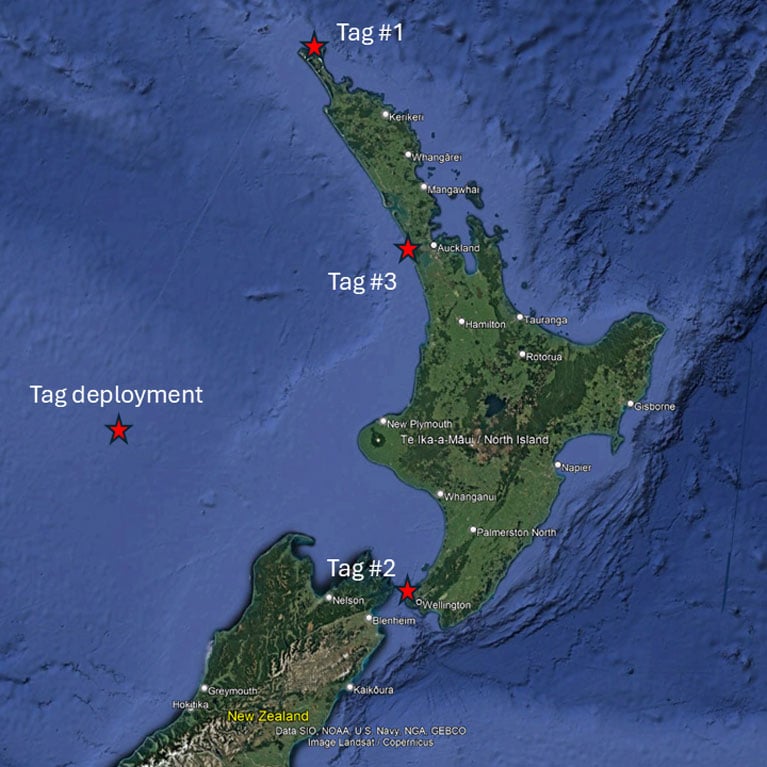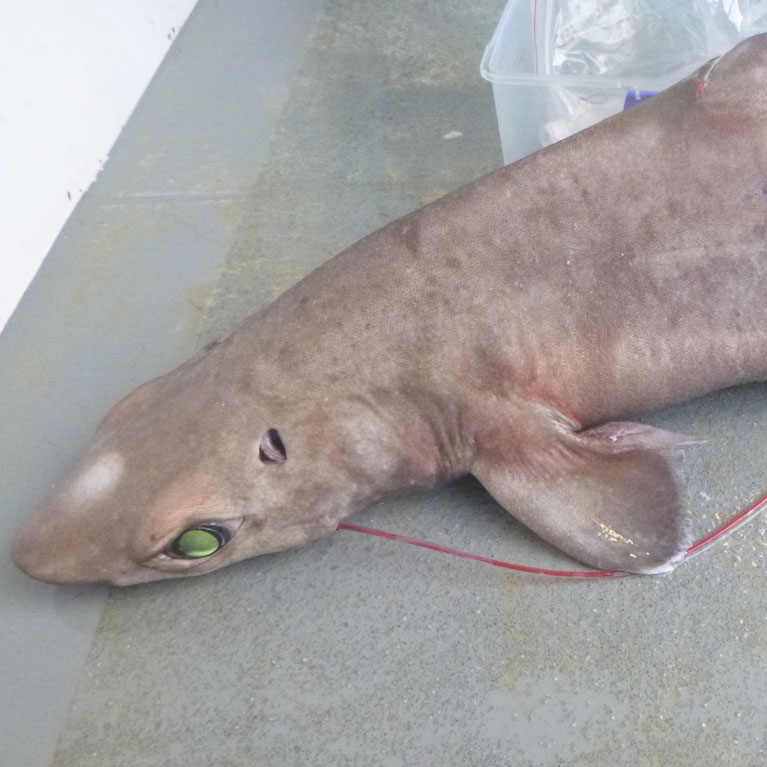Deep trouble? Gulper sharks and longline fisheries in New Zealand
Brittany is using a combination of methods to understand the vulnerability of gulper sharks to longline fisheries in New Zealand’s South Pacific Ocean. She will be satellite-tagging gulper sharks and looking at post-release mortality (how likely are gulper sharks to survive being caught and released in fisheries?). She’ll also explore how gulper sharks respond to the stress of being caught, try to confirm a nursery ground, and describe gulper shark movement patterns as they overlap with fisheries activities. All this information will feed into improved management for these vulnerable deep-sea sharks.
I grew up in Canada in a relatively small city nowhere near the ocean. The land barrier, however, never hindered my interest in the marine environment. I still remember how excited I was when I saw my first ocean animal (a humpback whale) at the age of 12. After finishing my undergraduate degree, I moved to New Zealand and now I am never more than a walk away from the sea. Every single day, I look out the window and see the ocean – and never get tired of the view.
When I agreed to take on...


A glimpse into the world of gulper sharks and their vulnerability to New Zealand fisheries
The primary objective of my project is to understand gulper shark movement patterns in the South Pacific and the sharks’ vulnerability to longline fisheries.
Gulper sharks (genus Centrophorus] are now among the most threatened of the deep-water sharks. Their sensitive biology and a lack of research and conservation effort for these sharks has led to the quiet and unnoticed disappearance of many populations around the world. In order to implement management and conservation action, improved information is required to understand gulper sharks’ ecology and the complexities of their interactions with fisheries.
Sharks are an important economic resource for fisheries. Gulper sharks are no exception and are caught as targeted catch and bycatch in small-scale and industrial fisheries. They are exploited primarily for their liver oil, which is considered the most valuable of shark liver oils. Gulper shark fisheries are known for their boom-and-bust nature over very short periods of time. What do these declines in catches mean? It could be that there was no longer a market for them and the fisheries shifted to some other marine resource, but it is more likely that the declining catches reflect a collapse in shark abundance. Despite the known vulnerability of gulper sharks, there is little to no management action in place to encourage sustainable harvesting or conserve their depleted populations. The complexity of managing these species becomes more pronounced when they are shared across nations. Targeted fishing has been banned in some areas, but gulper sharks are still at extremely high risk of capture in trawl, longline and gill-net fisheries that target other species.
Deep-water sharks often receive less attention than their inshore and pelagic counterparts due to the perceived notion that they are out of sight and out of mind – existing at depths beyond the reach of current fishing activities, they face a lesser degree of threat. As coastal fisheries have been depleted, however, there is renewed interest in expanding – or ‘unlocking’ – fisheries into deep water, where distant and less-fished locations are thought to have unexploited fish populations. Such interest in the deep sea further threatens the survival of gulper sharks. While the deficiency of data on gulper sharks provides ample opportunity for exciting scientific discoveries, it also highlights the imperative to collect information about them so that sound management and conservation decisions can be made.
The aim of this project is to understand the ecology of gulper sharks and their vulnerability to longline fisheries in the South Pacific, specifically around New Zealand. Five activities will lead to this aim:
- Completing the largest satellite-tagging study for gulper sharks in the southern hemisphere. This will be done by deploying satellite tags on up to 30 of the sharks from commercial longline vessels operating off southern New Zealand.
- Estimating post-release mortality, or how likely it is that a gulper shark will survive a fishing interaction. This will be determined with results from the tagged sharks, as well as by assessing the status and injuries of sharks when they are captured and released.
- Determining what influences gulper shark survival by measuring the physiological stress from capture. This will be achieved by measuring stress-mediated response indicators in blood samples, such as pH levels and the proportion of red cells, and looking for signs of gas embolism in shark tissue. Gas embolism is very poorly known in sharks.
- Tracing gulper shark movement patterns around New Zealand and their overlap with fishing activities. Movement patterns will be detailed using the results from tagged sharks combined with modelling approaches and oceanographic predictors to better understand habitat use. Fishing footprints will be overlaid with the movement patterns to assess spatial and temporal overlap with fishing activities.
- Confirming the presence of a nursery area for gulper sharks off Puysegur Point at the south-western tip of New Zealand’s South Island. This will be completed by reviewing annual commercial catches of gulper sharks and confirming the presence of newborn gulper sharks and mature females that are pregnant or show evidence of having recently given birth. This will give us evidence that this area provides important habitat for gulper sharks.

